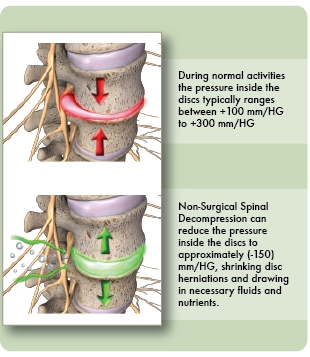Non-Surgical Spinal Decompression in University Place WA
Are you looking for spinal decompression in University Place WA? You don't have to live in debilitating pain. Whether you have lower back pain, a pinched nerve, sciatica, radiating pain into the arms or legs, neck pain, or a variety of symptoms related to damaged or degenerative discs, spinal stenosis, and post-operative complications, as well as syndromes of the lumbar and cervical spine. Spinal Decompression may be for you.
My Personal Story
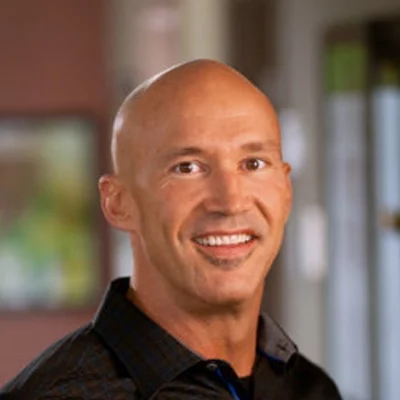
My interest in non-surgical spinal decompression came about due to a personal crisis with my own spine (2-“severe” lumbar disc herniations/extrusions) after a weight-lifting injury. I was told I would likely need surgery due to the size of the disc extrusions and the fact that I had lost use of my left leg; I had to use crutches to get around, could not lift my foot or toes and had pain shooting all the way down to my toes. I had some of the highest pain levels I’ve ever had and I knew by my second session that I had to learn more about this form of spinal care, as it was the most effective treatment I’ve seen for disc herniations.
By my third session, I was done with crutches and stayed the course until I had received 20 sessions and was fully functional.
Initially, due to the severity of my injury, I thought I would no longer be able to ride my dirt-bike, go snowboarding, lift weights, etc., but I’m back doing all of it. In fact, I regularly lift heavy weights (squats and deadlifts to name a few) and do anything I did previously with no discomfort whatsoever.
Having performed several thousand decompressions on patients over the years, we’re now able to quickly determine who is a good candidate and what it will work best on. We’ve had great success with arthritis, non-specific spinal pain, failed spinal surgery, disc bulges, disc herniations, disc extrusions, spondylolisthesis, atypical migraines and injuries from car accidents.
The Equipment
There are many decompression equipment manufacturers out there, but upon doing my own research on the differences, Hill DT stood out as the best possible decompression table on the market for several reasons:
- Can better isolate the exact level of disc/joint injury, thereby precisely directing the de-compressive forces for faster results.
- Uses roughly 50% of the force during decompression, when compared to other tables, so the treatment is much more comfortable; most people fall asleep during the treatment.
- Every 2-milliseconds, the table measures muscle resistance and/or spasm and will back off the de-compressive force within 0.33-milliseconds so the disc stays in a negative pressure zone (vacuum) for the full treatment session.
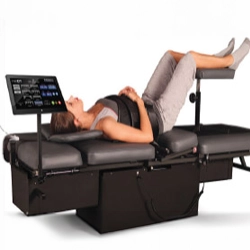
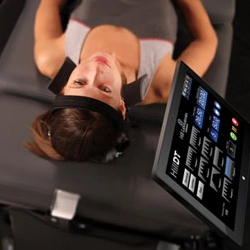
What Is Decompression?
Non-Surgical Spinal Decompression is a revolutionary new technology used primarily to treat disc injuries in the neck and lower back. This treatment option is very safe and utilizes FDA cleared equipment to apply de-compressive forces to spinal structures in a precise and graduated manner.
Decompression is offset by cycles of partial relaxation. Decompression has shown the ability to gently separate the vertebrae from each other, creating a vacuum inside the discs that are targeted. This “vacuum effect” is also known as negative intra-discal pressure.
The negative pressure may induce the retraction of the herniated or bulging disc into the inside of the disc, and off the nerve root, thecal sac, or both. It happens only microscopically each time, but cumulatively, over four to eight weeks, the results are quite dramatic.
The cycles of decompression and partial relaxation, over a series of visits, promote the diffusion of water, oxygen, and nutrient-rich fluids from the outside of the discs to the inside. These nutrients enable the torn and degenerated disc fibers to begin to heal.
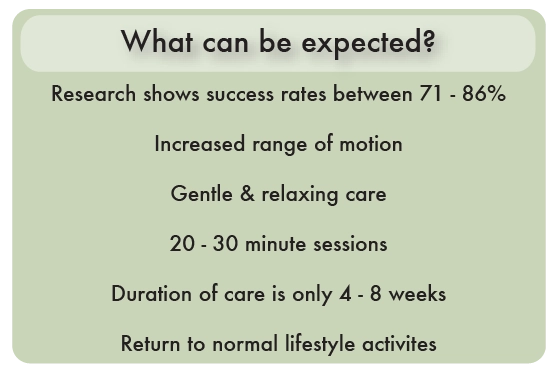
For the low back, the patient lies comfortably on his/her back on the decompression table, with a set of gel-padded restraints snug around the waist and straps set around the lower chest. For the neck, the patient lies comfortably on his/her back with a set of padded restraints behind the neck. Many patients enjoy the treatment, as it is usually quite comfortable and well tolerated.
Non-Surgical Spinal Decompression is very effective at treating bulging discs, herniated discs, pinched nerves, sciatica, radiating arm pain, degenerative disc disease, leg pain, and facet syndromes. Proper patient screening is imperative and only the best candidates are accepted for care.
Understanding Spinal Decompression IN University Place WA
This gentle, non-surgical procedure can provide lower back and neck pain relief, and sciatica pain relief, and is a state-of-the-art procedure for, bulging, herniated, or degenerative disc disease in the neck and lumbar regions.
The gentle distractive forces of the Spinal Decompression create a decompression of the spine with unloading due to distraction and proper positioning, to improve blood flow and nutrient exchange to the injured area. You'll experience several cycles of stretch and relaxation, which graduate to a peak over a period of several minutes.
How long does the treatment take?
Therapy sessions typically last less than 20 minutes, 3 times a week for 1 month, transitioning from passive to active treatments as you respond, with most patients feeling pain relief with as few as 6-10 treatments. Most patients are released from treatment after 8 weeks.
A complete program targeting the function of the stabilization ligaments, tendons, and muscles is a vital part of Spinal Decompression. Exercise and adjunctive therapies such as heat, muscle stimulation, ultrasound, and cold therapy can assist in the rehabilitation of these structures. Our goal is to not only help heal the disc but also enhance muscular control and support of the back and neck.
Regular home exercise and periodic visits to our office will help in maintaining your spinal health and reduce the probability of reoccurrence.
Call our team at Atlas Family Chiropractic if you have questions about spinal decompression in University Place WA.
OFFICE HOURS
Monday
9:00am - 1:00pm
3:00pm - 6:00pm
Tuesday
9:00am - 12:30pm
3:00pm - 5:00pm
Wednesday
9:00am - 1:00pm
3:00pm - 6:00pm
Thursday
9:00am - 1:00pm
3:00pm - 6:00pm
Friday
9:00am - 1:00pm
Saturday & Sunday
Closed
Atlas Family Chiropractic
2310 Mildred St W # 130
University Place, WA 98466
P: (253) 460-4244
F: (877) 841-5137


